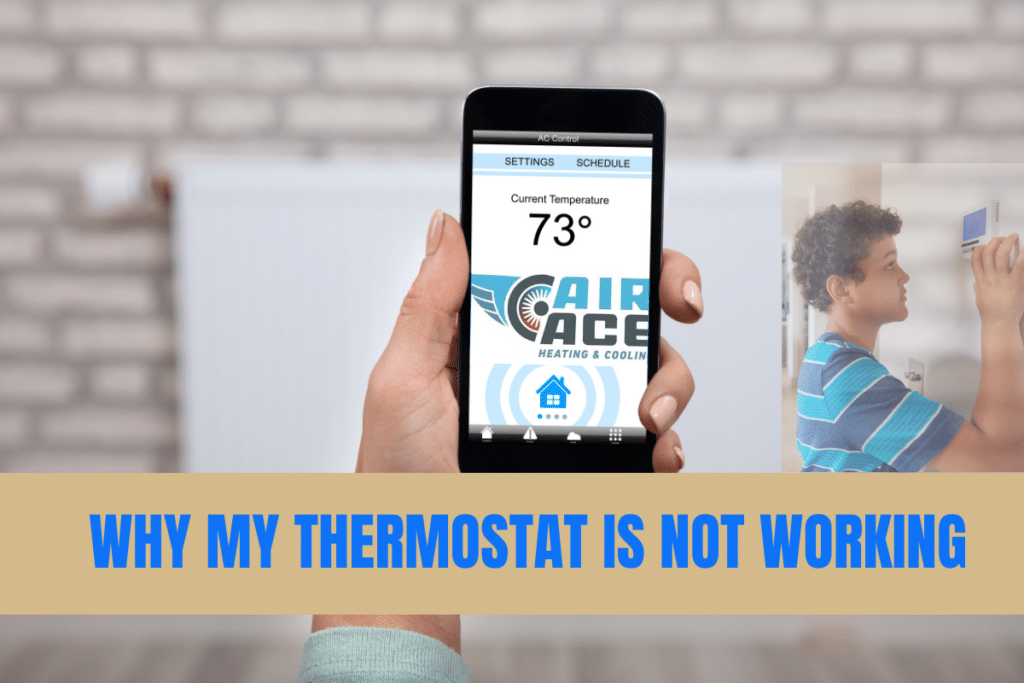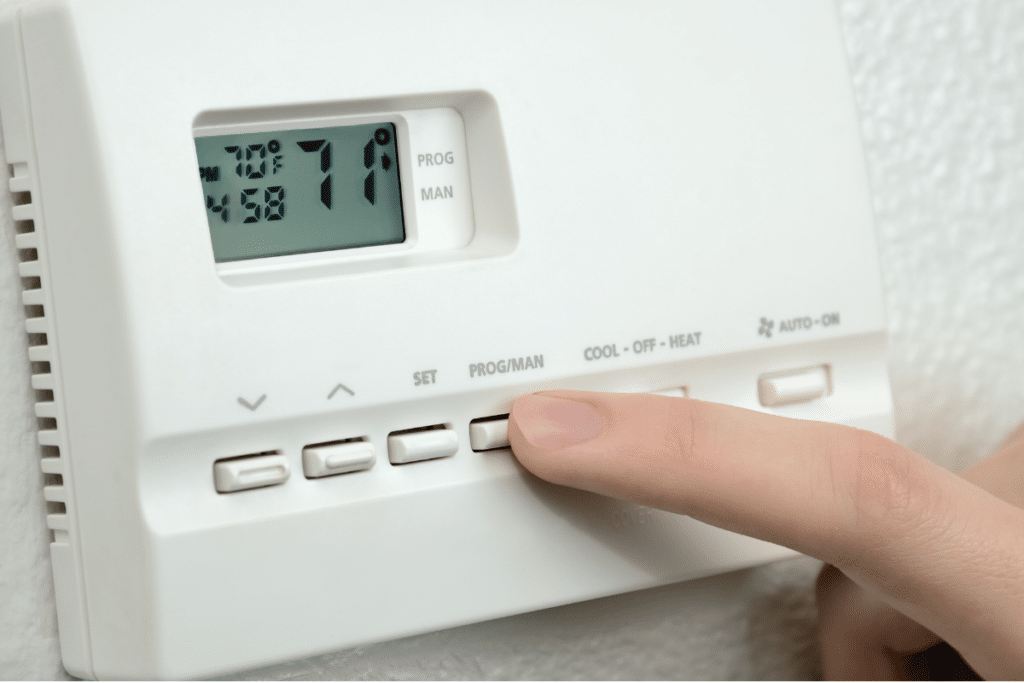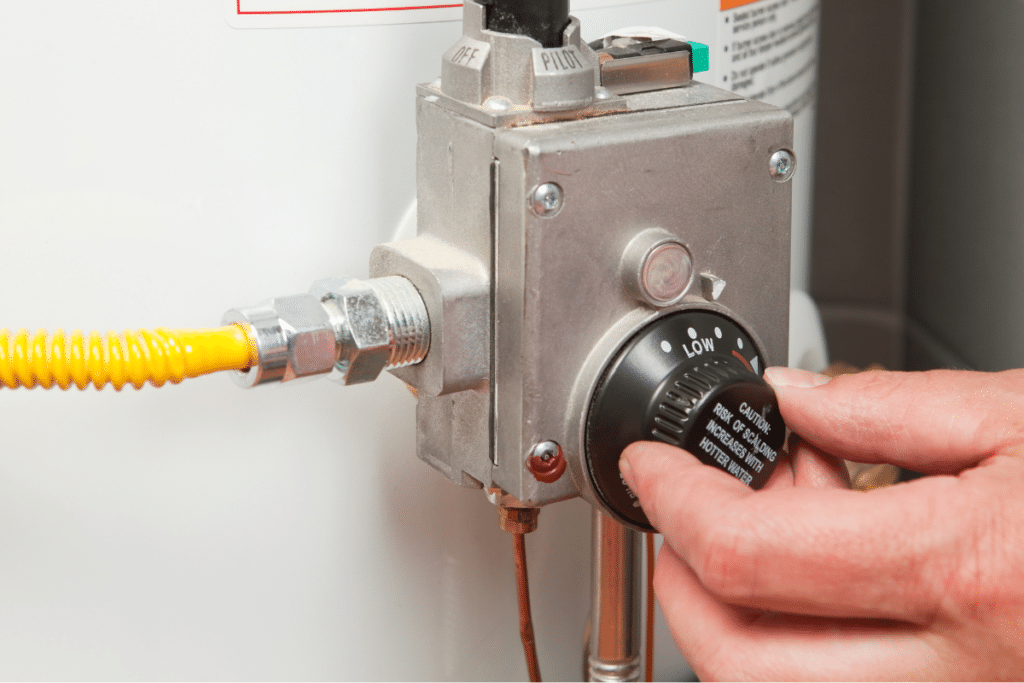Why My Thermostat Is Not Working?

A malfunctioning thermostat can be frustrating when trying to maintain an ideal indoor climate. An accurate temperature controller is critical to optimizing HVAC system efficiency. In this article, we’ll go over some common problems associated with thermostats, signs that indicate when one may not be functioning as expected, and ways you can fix any malfunction.
Signs Your Thermostat Is Not Working
Your thermostat is an integral component of any HVAC system that allows you to maintain the desired temperature in your home or office, but if it stops functioning correctly, it could create numerous issues that significantly reduce indoor air quality and energy bills.

Here are some signs of your thermostat problems:
Temperature Fluctuations
One of the signs that your thermostat is malfunctioning is temperature fluctuations in your home or office. If room temperatures seem to change rapidly or diverge from those set on your thermostat, this may indicate it has stopped functioning correctly.
It should also be considered possible causes like malfunctioning heating/cooling systems or a loose thermostat cover before drawing any definitive conclusions about whether your thermostat is responsible.
Temperature fluctuations can be extremely frustrating and uncomfortable during extreme weather conditions. A malfunctioning thermostat could be responsible for overheating or underheating your space, leading to uneven temperatures and energy waste.
If this issue arises frequently, contact an HVAC professional right away so they can diagnose and address your thermostat problems.
Accurate Readings

If your thermostat is providing incorrect temperature readings, this may be caused by a defective sensor or loose wiring. An inaccurate reading may lead to uneven heating or cooling in your home or office space as well as cause your HVAC system to work harder than necessary, increasing energy bills and shortening its lifespan.
Incorrect readings could be caused by multiple factors, including dust accumulation, loose wires, or malfunctioning sensors. If your thermostat is showing inaccurate temperature readings, it’s essential that you contact an HVAC professional right away in order to diagnose and repair your thermostat problems.
Blank Screen Spotting
If your thermostat screen is blank or non-responsive, this could be caused by several reasons such as a power outage or faulty power supply, loose wiring, or malfunctioning thermostat. A blank thermostat screen could also indicate that it needs replacing as soon as possible.
An empty screen on your thermostat is extremely frustrating if it controls your HVAC system, making life much harder for you and those around you. When encountering such an issue, first check whether your thermostat is receiving power and if any loose wires exist before calling a professional HVAC technician to diagnose and repair it.
Unresponsive Buttons

Unresponsive buttons prevent you from changing temperature settings to achieve comfort indoors and reduce energy bills.
Unresponsive buttons could be caused by any number of factors, including dust and debris buildup, damaged buttons, or improper wiring. If your thermostat’s buttons stop functioning properly, it is imperative that you contact a professional HVAC technician promptly so they can diagnose and resolve it as soon as possible.
Potential Causes Why Your Thermostat Isn’t Working

There may be various reasons why your thermostat is malfunctioning; here are a few of them:
Dead Batteries
One of the main reasons thermostats stop functioning is due to dead batteries. Even wired thermostats come equipped with backup battery capacity in case of power outages, so when your thermostat displays a blank screen or does not respond as expected, check its battery first.
Make sure they’re installed properly with enough charge – then try replacing them with fresh ones to see if that fixes it. Replacing all batteries annually is highly recommended for optimal operation of your thermostat!
Incorrect Settings / Presets
An alternative explanation for why your thermostat may not be functioning is incorrect settings. When these are set incorrectly, they can cause your device to malfunction – for instance, if set on cool instead of heat, the heating system won’t turn on, or if the temperature setting is too high/low leading it will shut off/not turn on at all.
Therefore, always double-check settings and make any necessary adjustments if necessary.
Dirty or Obstructed Thermostat
An obstructed thermostat may also contribute to its malfunction. Dirt and debris buildup around it may block temperature sensors or interfere with mechanical components, making the thermostat unusable.
Regularly brush away any accumulations using a soft-bristled brush; ensure there are no objects such as furniture, curtains, or plants blocking its path.
Regular cleaning should ensure optimal functionality.
Location in an Unfavorable Environment
The position is another crucial aspect of thermostat performance. Placing it near drafty windows or heat sources may lead to temperature fluctuations that prevent its proper function.
Your thermostat’s performance could suffer in an environment with too high or too low temperatures; make sure it is placed in an ideal location for accurate temperature readings.
Malfunctioning Wiring
Faulty wiring can also cause your thermostat to malfunction. Be sure to double-check that all wires are correctly connected; any damaged ones should be immediately replaced, and for best results, it would be prudent to consult a professional electrician.
If the wiring on your thermostat is defective, it could result in its ineffective functioning. Check to make sure it’s properly connected.
Need for Replacement

If none of the solutions listed above work, it could be time for a replacement thermostat. Over time, thermostats may become outdated or malfunction due to wear and tear.
If your thermostat is more than 10 years old, it could be wiser to invest in one that’s more energy-efficient and reliable.
Troubleshooting Steps for Fixing a Not Working Thermostat
Here are some steps for diagnosing and fixing a malfunctioning thermostat:
Testing and Replacing Batteries
If the thermostat’s display is blank, one of the first things to investigate is its batteries. Dead ones could be the cause, so referring to your thermostat manual on how to change out batteries may help remedy the situation.
If changing out your batteries does not solve your issues, there could be something more sinister going on with them.
Adjusting Settings
Improper settings can cause your thermostat to function incorrectly, which can, in turn affect the performance of your air conditioning system, so make sure they’re appropriate for your HVAC system and operating mode.
Once everything checks out, try adjusting the temperature setting on your air conditioning system, as this might solve your issue.
Cleaning the Thermostat
A dirty or obstructed thermostat can malfunction, so keep it clear by brushing away any dust or debris that accumulates on it.
Avoid liquid cleaners or solvents that may harm its functionality; for an especially dirty thermostat, you may have to take additional measures, such as taking off its cover, in order to properly clean it.
Relocating Your Thermostat
Placing a thermostat in an uncomfortable area can lead to inaccurate temperature readings. Check whether it is exposed directly to sunlight, near an energy source, or located somewhere prone to draftiness – and relocate as necessary to a more suitable spot.
Replacing the Thermostat
If none of the other steps prove effective in correcting your issue, it may be time to replace your thermostat. A malfunctioning one can lead to energy waste and discomfort; for optimal performance, consult with an HVAC technician about selecting and installing a suitable unit.
Check for Wiring Issues
Faulty thermostats could also stem from placement issues in potentially troublesome areas or wiring malfunctions. Make sure it is securely attached to both the thermostat and HVAC system – if unsure, consult a professional.

Conclusion
A malfunctioning thermostat is a source of great discomfort and energy waste in HVAC systems, so it’s vital that HVAC system owners know the signs of a faulty thermostat as well as how to troubleshoot its problems.
Common indicators may include temperature fluctuations, inaccurate readings, blank screens, or unresponsive buttons; dead batteries could also be the reason, as can a dirty or faulty thermostat.
Troubleshooting a malfunctioning thermostat requires checking and replacing batteries, adjusting settings, cleaning the thermostat, relocating it if possible and replacing it when necessary, replacing it with a new one, and verifying wiring issues as essential steps in maintenance plans for your systems and thermostats alike.
Regular maintenance check-ups are key in order to maintain optimally functioning thermostats and systems. Thus, it is wise to set an annual appointment with an HVAC professional and ensure all components, including the thermostat, are working efficiently together as part of one system.
Overall, a broken thermostat can wreak havoc with HVAC systems, leading to discomfort and energy waste. By learning the telltale signs of a bad thermostat and how to troubleshoot its issue, you can save money and improve comfort levels in your home.
